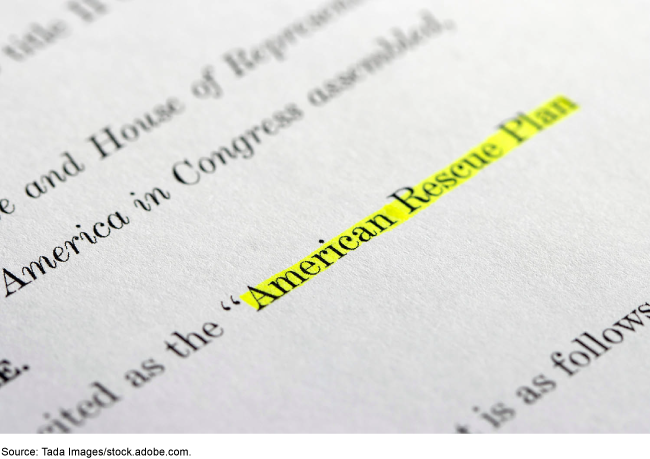American Rescue Plan Act: Implementation of Economic Development, Environment, and Wildlife Provisions
Fast Facts
As part of the pandemic response, the American Rescue Plan Act of 2021 appropriated funds to three agencies: $3 billion to the Economic Development Administration, $100 million to the Environmental Protection Agency, and $105 million to the Fish and Wildlife Service. The funds would help the agencies create jobs and improve public health.
We looked at how the agencies have used the funds so far, their procedures for awarding them, and how they plan to monitor the funds to ensure they're being used for their intended purposes.
Generally, the agencies followed existing procedures to award the funds, and plan to do the same to monitor them.

Highlights
What GAO Found
In the American Rescue Plan Act of 2021 (ARPA), Congress sought to help address public health and economic effects of the COVID-19 pandemic by providing $3 billion to the Economic Development Administration (EDA), $100 million to the Environmental Protection Agency (EPA), and $105 million to the U.S. Fish and Wildlife Service (FWS). EDA allocated its appropriation largely toward grants intended to create jobs. EPA funded activities addressing public health harms, and FWS expanded agency services for such things as wildlife disease research and trafficking enforcement. As of the first quarter of fiscal year 2023, EDA had obligated nearly 100 percent, EPA 67 percent, and FWS 49 percent of their appropriations.
Status of American Rescue Plan Act Appropriations, by Selected Agency, as of End of First Quarter Fiscal Year 2023

The agencies are largely using their existing procedures to distribute ARPA appropriations to external organizations, with some modifications. For example, for one initiative, EDA established a new prescreening process intended to limit time spent assessing less competitive applications. This change was made to streamline the review process and accommodate the larger volume of applications. EPA conducted legal reviews of ARPA applications earlier than usual in its review process to expedite eligibility determinations. This allowed EPA to identify when certain activities of a proposed project were not eligible for ARPA funding. FWS created a reimbursement program for zoos and aquariums and established procedures to ensure recipients did not receive payment for the same activity under more than one COVID-19 relief program.
To mitigate risks, such as fraud or poor performance, the agencies applied their standard assessment procedures for assessing ARPA applicants. For example, they used government-wide databases to obtain information about applicants' eligibility and past performance using federal funds. For applicants without prior federal funding, the agencies obtained information on applicants' financial management, organizational capacity, and other factors.
Once funds are awarded, all three agencies plan to monitor ARPA awards using their existing procedures. These monitoring activities are based on relevant regulations and require such activities as periodic financial and performance reporting. Awards exceeding $750,000 are subject to financial and compliance audits. In addition, the inspectors general that oversee EDA and EPA plan to oversee awards that used ARPA funds.
Why GAO Did This Study
Under ARPA, Congress provided a total of $3.205 billion to EDA, EPA, and FWS. These funds were to be used by EDA to help communities and regions respond to economic injury, by EPA to address health outcome disparities in underserved communities, and by FWS to prevent zoonotic diseases and to care for animals in zoos and aquariums. These funds were to be used by the end of fiscal year 2022 for EDA and are available until expended for EPA and FWS.
GAO was asked to review these agencies' implementation of ARPA provisions and expenditure of ARPA funds. This report examines how the agencies allocated ARPA appropriations, their procedures for making grant and reimbursement awards, and their plans to monitor these awards.
GAO reviewed agencies' budget data for fiscal years 2021 and 2022 and the first quarter of fiscal year 2023. GAO also reviewed agency spending plans, funding announcements, and agency plans to monitor and audit grant recipients. GAO selected a nongeneralizable sample of 13 grants in total (selected to reflect various funding amounts and project characteristics) and reviewed their files to determine how agencies documented their evaluation of applicants. GAO also interviewed agency officials and compared each agency's grant-making and monitoring procedures against federal requirements.
For more information, contact William B Shear at (202) 512-8678 or ShearW@gao.go or J. Alfredo Gómez at (202) 512-3841 or GomezJ@gao.gov.
